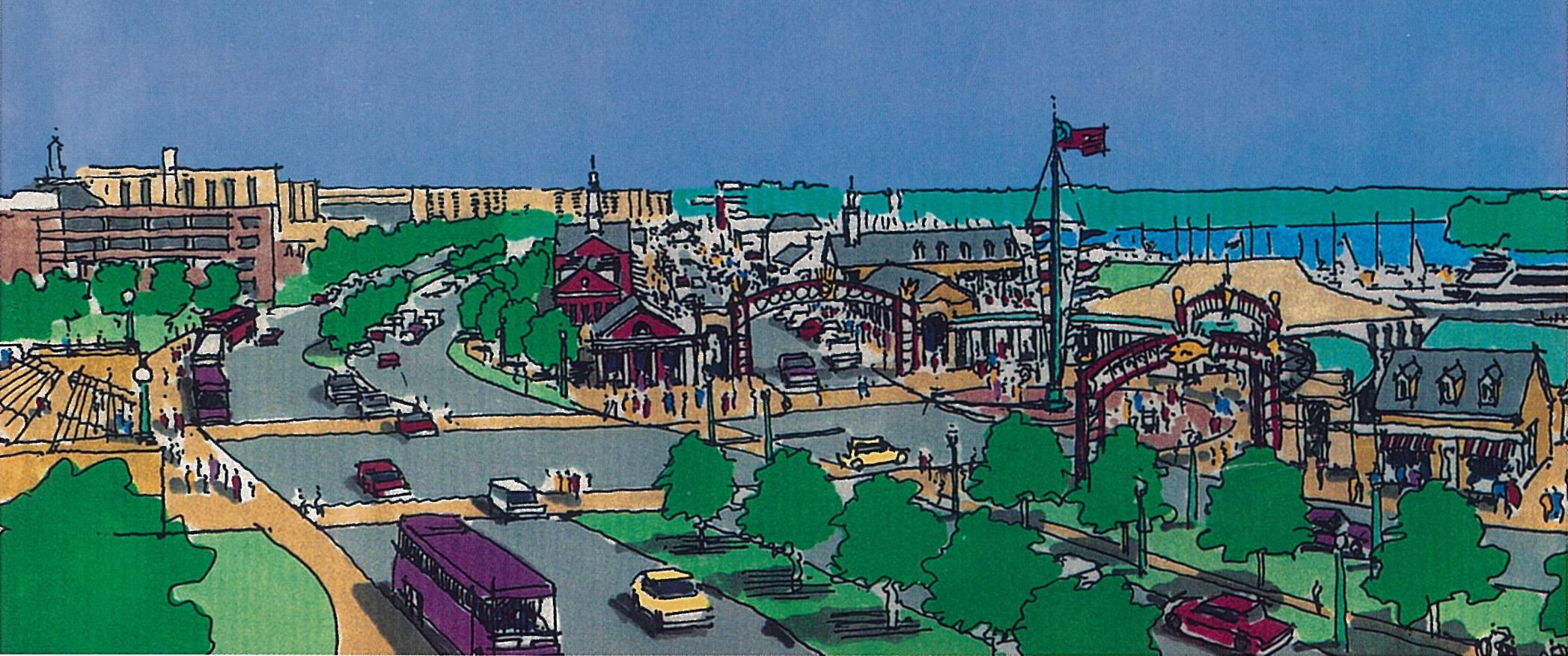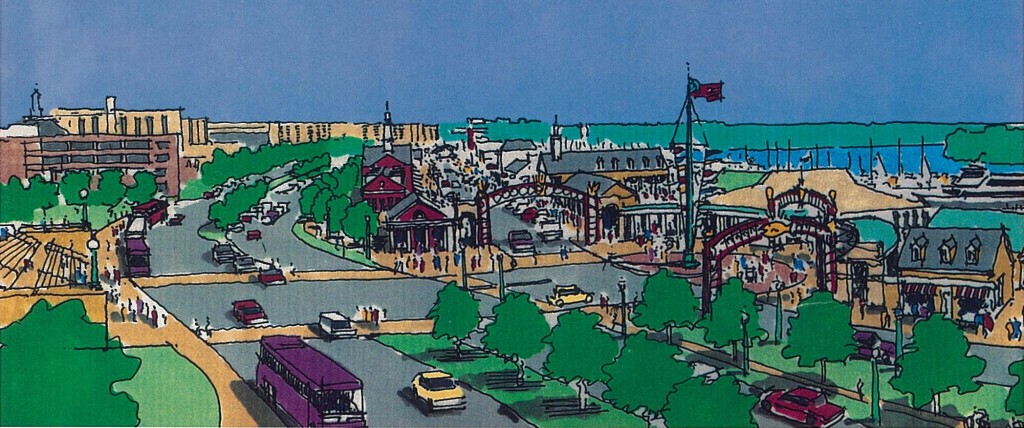

Nearly 20 years ago Southwest’s largest landlord, the U.S. Environmental Protection Agency (EPA), announced it was moving its 4,500 employees out of its headquarters in the heart of Southwest.
The shock of this announcement roused the Southwest Neighborhood Assembly (Assembly), as the SW locally elected civic association, to undertake an exhaustive year-long research effort.
Southwest’s Town Center, later known as Waterside Mall and Waterfront Station had been designed as a regional shopping and employment center, but by the time it was built, shopping and transportation patterns had shifted. Nonetheless the EPA’s presence stabilized the retail establishment. But by the 1990s, less than half of the retail space was leased, and Waterside Mall wasn’t the only issue. The community particularly recognized that its waterfront was a tremendous underutilized resource.
The Assembly commenced a campaign for Southwest residents to take control of their future. Before an audience of over 200 residents assembled at St. Augustine’s, the Assembly announced its resolution to engage an Urban Land Institute (ULI) Panel to prepare a comprehensive study focused on Waterside Mall, the Waterfront, and the Maine Avenue/M Street corridor.
The only hitch was ULI’s $100,000 fee.
But in an “unheard of 55 days,” an Assembly committee raised $160,000 from a broad coalition of Southwest residential complexes, businesses, and individuals. It came to be known as the $100,000 Miracle.
The ULI Panel analyzed the problems, researched the market potential, explored urban design issues, and solicited community input. As advertised in the March 1998 Southwester, the process was highlighted by a “Community Reception” at the Spirit of Washington.
ULI’s recommendations were unveiled at the Rayburn Building’s Gold Room, before various dignitaries including Eleanor Holmes Norton. The thirteen development strategies as outlined in a 1998 Assembly brochure included:
- Reuniting the two halves of 4th Street by opening up Waterside Mall. A completely new Main Street-oriented retail center will have the kinds of places that enhance the quality of life – stores that serve community needs…
- A festive Waterfront marketplace, concentrating 200,000 square feet of restaurants, specialty retail and entertainment along a new pedestrian promenade on Water Street
- More convenient, safe parking for the retail centers as well as Arena Stage, and Southeastern University.
- A program of historic markers and statues to explain famous sites and commemorate significant events; a system of signs and distinctive graphics to improve directions in the neighborhood
- water taxis linking the Southwest Waterfront to Georgetown’s Washington Harbour, Alexandria, and locations on the Anacostia River
- A shuttle bus system to expedite the transportation of tourists, workers, shoppers and local residents to and from the National Mall, Pennsylvania Avenue, the Navy Yard, Waterside Mall and the waterfront
- A standard of architectural excellence for the half million square feet of new construction that will be built in the next few years
- A new identity and marketing initiative
Dozens of community meetings later, including a record-setting forum jointly-held with the ANC at the Mandarin Oriental in 2011, we have a new waterfront and town center underway.
The secondary recommendations are also in various stages of implementation. The Assembly worked with Cultural Tourism to install the Southwest Heritage Trail in 2004. This past year we came to an agreement with the ANC and Waterfront developers to update and expand the Trail beginning this year. The Assembly transformed Southwest’s historic call boxes into commemorative art. And with programs like Titanic 100, SW Artsfest, Arena Stage, and the Rubell’s planned cultural center, Southwest is becoming increasingly branded as a waterfront and cultural destination.
Transportation improvements have also occurred. Ferries now serve the SW Waterfront, the Circulator system was inaugurated in 2005, and while everyone regrets the system was pulled from Southwest in 2011, we’re looking forward to its reestablishment in SW next year. Please come to the semi-annual Circulator meeting on June 18th at the Studio Theater or send your comments to spring.worth@dc.gov.
So with these developments materializing, the Southwest Neighborhood Assembly welcomes the next evolution of neighborhood planning, the Small Area Plan.
By Kael Anderson
President, Southwest Neighborhood Assembly

